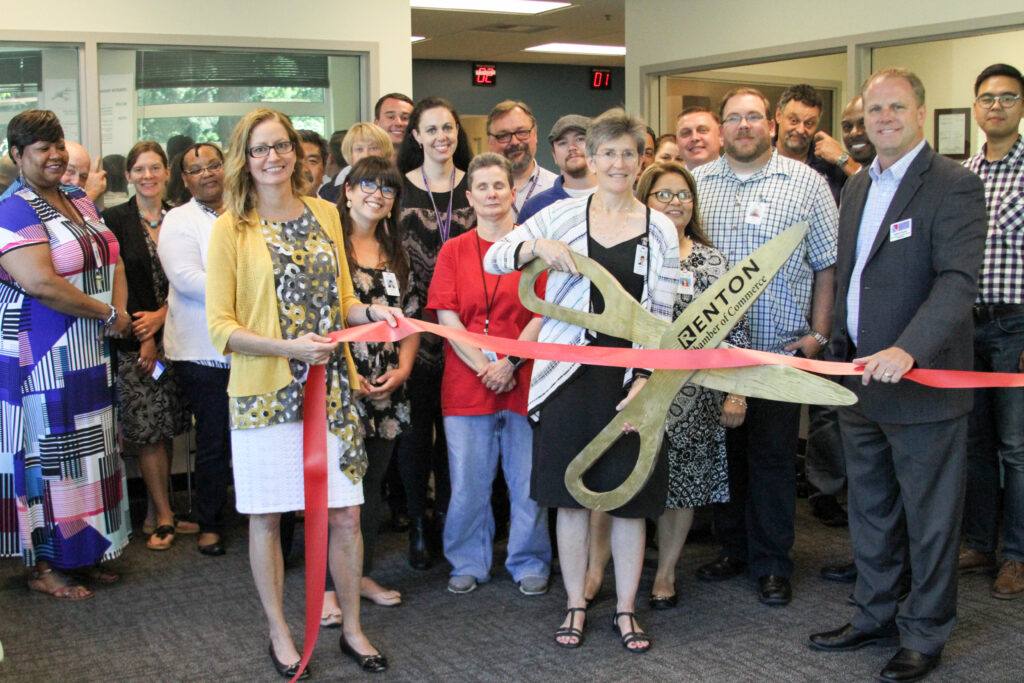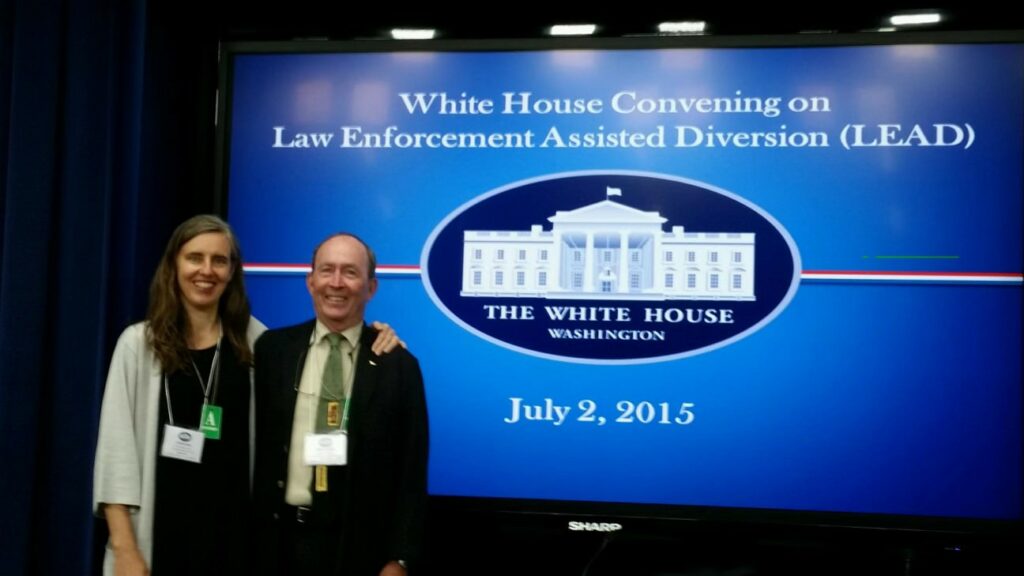
Image description: ETS hosts US Surgeon General Dr. Vivek Murthy. The visit was part of his national “Turn the Tide on Addiction” campaign to discuss initiatives to combat the opioid epidemic.
Evergreen Treatment Services (ETS) has been transforming lives and communities through innovative and effective addiction services for five decades. A lot has changed in 50 years. In our “ETS by the Decades” blog series, rather than attempting a full history of substance use treatment and homeless services—topics on which many volumes have been written—we share how select major U.S. events, policies, and public opinions influenced ETS’s services and practices.
For the fourth part of the series, we review how the crackdown on pill mills led to the rise of black tar heroin use and how ETS expanded to meet communities’ needs. To catch up on previous decades blogs, click the links to the 70s and 80s, 90s, or 2000s.
Donate to ETS to support our life-saving work.
As we highlighted in our last “ETS by the Decades” blog about the 2000s, the overprescription of opioids led to a tremendous rise in opioid addiction among more affluent and white populations.
As lawmakers in the late ‘90s and early 2000s began to understand the scale and devastation opioid pain medications were causing, they cracked down on doctors’ offices with high prescription rates, including the notorious pill mills. The necessary shutdown of these harmful facilities led to a different challenge, what the Centers for Disease Control and Prevention call the second wave of the opioid epidemic: increased demand for cheap and accessible heroin, called “black tar” heroin to differentiate it from the white powder heroin that most people were familiar with prior to this time.
Unfortunately, addiction, as a chronic behavioral health condition, does not fade because legal regulations are put into place. With the cutbacks on the amount of prescription medications doctors could prescribe, the people who had developed an addiction to prescription opioids no longer had access.
To fill this gap, drug traffickers flooded U.S. markets—often strategically around communities with recently shuttered pill mills—with cheap and easy-to-access heroin. According to Addiction Center, roughly 80% of Americans who struggle with addiction to heroin say they started with prescription pain medications. This same resource states that the number of people using heroin in the U.S. went from 404,000 in 2003 to 948,000 in 2016—an increase of 135%. For a detailed account on the development of the black tar heroin drug market, read journalist Sam Quinones’ 2015 book, “Dreamland: The True Tale of America’s Opiate Epidemic.”
At ETS, the cumulative effect of the first wave of the opioid epidemic from prescription medications and the second wave from black tar heroin was long waitlists for treatment and a need that far exceeded ETS’s capacity.
To meet this need, Molly Carney, the executive director at ETS from 2013 to 2019, led the organization through a substantial amount of growth during this time, building two new clinics—in Grays Harbor and Renton—and doubling the number of people that ETS served. “It was an awful lot of growth in a very short period of time,” Molly reflected. “The reality is that our treatment keeps people alive. So, I felt like we had to do it.” To read more about Molly’s time at ETS and how she and her team managed this rapid yet necessary growth, read Molly’s story on our blog.

In 2016, the U.S. Surgeon General’s report (pdf) focused on substance use and treatment for the first time. Then Surgeon General Vivek Murthy visited ETS and met with Molly as part of his “Turn the Tide on Addiction” campaign as he toured the U.S. In 2017, the Trump administration, after having run on a platform of getting a handle on this epidemic, officially declared the opioid epidemic a national emergency.
The LEAD program—a partnership between ETS’s REACH program and Purpose. Dignity. Action. (PDA) in Seattle—began in 2011. LEAD was a reaction to the number of low-level drug crimes that were putting people—largely Black, brown, and indigenous folks—in jail and subjecting them to cycles of incarceration and criminal records that only set them back further.
LEAD, originally an acronym for “law enforcement assisted diversion,” proposed a different solution: what if instead of putting people in prison, we offered them the services they need instead? The LEAD program began diverting people who otherwise would have been arrested to receive case management services with REACH. The REACH team would then partner with each person to determine what support they need to meet their needs. This approach has been replicated throughout the nation.

REACH had strong results in its early years—read more about them in this New York Times opinion piece by Nicholas Kristof featuring REACH team member Mikel Kowalcyk—and has only continued to grow and shift to meet community needs. To learn more about the principles around the LEAD program and how it fits into REACH’s efforts to build community and racial justice, read interviews with REACH’s Director of Community Justice Brandie flood in 2020 and 2021.
ETS experienced several milestones over its 50-year history. Explore them on our website through our interactive timeline. In our next installment of ETS by the Decades, we will cover the changes to treatment because of the COVID-19 pandemic and the devastating effects of the rise of fentanyl.




